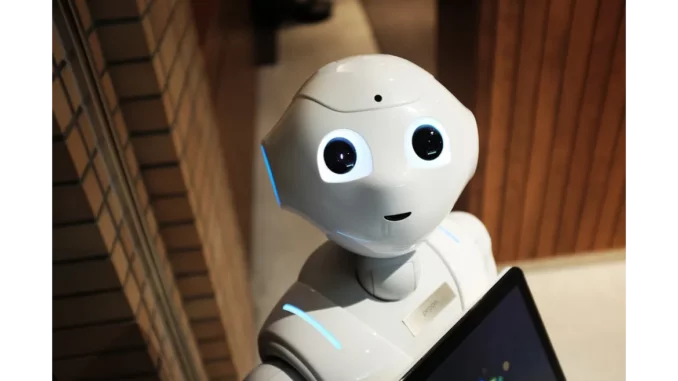
Summary
Sensor Market Set for Disruption: The Impact of AI and Emerging Technologies
The global sensor market is on the brink of significant transformation, driven by advancements in artificial intelligence and emerging sensor technologies. At a recent webinar hosted by Dr Tess Skyrme, Senior Technology Analyst at IDTechEx, attendees explored the innovations poised to disrupt this expansive industry. Emily Carter, an experienced engineer in sensor technology, shared her insights from the session, underscoring the market’s future trajectory and the critical role of sensors in various sectors including healthcare, industrial automation, and environmental monitoring.
Main Article
Last week, a pivotal dialogue unfolded between Emily Carter, a seasoned engineer in sensor technology, and myself, regarding the future of the global sensor market. Carter, fresh from a thought-provoking webinar led by Dr Tess Skyrme of IDTechEx, offered a detailed account of the proceedings and their implications for the tech industry. The discussion took place in a vibrant café, where Carter’s zeal for the subject was unmistakable.
Technological Integration and Market Overview
The webinar provided a sweeping overview of the current sensor market, revealing the integral role sensors play across diverse sectors. “Dr Skyrme mapped out the meta-trends and market verticals,” Carter explained. “It’s astonishing to see how deeply embedded sensors are in communications, healthcare, and energy.” The session highlighted that understanding these trends is fundamental for any technology professional.
A major theme was the integration of artificial intelligence with edge sensing technologies. “AI is transforming sensor operations,” Carter remarked. “By enabling local data processing, AI reduces latency and boosts efficiency, which is crucial for real-time applications like autonomous vehicles and smart cities.” This integration represents a pivotal shift, signifying a move towards more self-sufficient and responsive systems.
Emerging Technologies and Challenges
The exploration of emerging sensor technologies was particularly captivating. Dr Skyrme discussed innovations such as printed sensors, quantum sensors, and nanocarbon sensors, which are transitioning from theoretical concepts to practical applications. “Printed sensors are already making waves in wearables and IoT devices due to their flexibility and cost-effectiveness,” Carter noted. Such advancements are set to redefine product capabilities and market reach.
However, these innovations are not without their challenges. “Quantum sensors promise unparalleled precision, but they face hurdles like high costs and the need for complex infrastructure,” Carter acknowledged. Addressing these challenges will be crucial for widespread adoption and integration into existing systems.
Sector-Specific Applications
The webinar also underscored the critical importance of biosensors and gas sensors, especially in health and environmental monitoring. “Biosensors are used in glucose monitoring and pathogen detection, while gas sensors are vital for urban air quality monitoring,” Carter elaborated. With increased focus on health and environmental sustainability, these sensors are gaining prominence, driving further innovation in their development.
Dr Skyrme’s case studies on rapidly growing markets such as future mobility and wearables provided tangible examples of how these technologies are being applied in real-world scenarios. “Seeing these applications in burgeoning markets was inspiring,” Carter recalled. Such insights offer a glimpse into the future, highlighting both progress and potential pathways for continued growth.
Future Forecasts and Market Potential
The session concluded with a ten-year forecast for the sensor market, providing a roadmap for future developments. “Dr Skyrme’s predictions suggest the market will continue to expand as technology advances and new applications emerge,” Carter mused. The integration of AI and IoT is expected to play a significant role in this growth, amplifying the market’s potential and scope.
Detailed Analysis
The insights shared by Emily Carter from Dr Skyrme’s webinar underscore the dynamic nature of the sensor market, a sector poised at the intersection of multiple technological advancements. The integration of AI with edge sensing is not merely a technical enhancement but a paradigm shift that could redefine operational efficiencies and capabilities across industries. This trend aligns with broader technological shifts towards more intelligent and autonomous systems, reflecting a global push for increased automation and real-time data processing.
Emerging sensor technologies, particularly printed, quantum, and nanocarbon sensors, represent significant breakthroughs. Their development could disrupt traditional manufacturing and operational models, offering new levels of precision and functionality. However, the challenges associated with these technologies, such as cost and infrastructure requirements, highlight the need for strategic investment and innovation to overcome barriers to entry and adoption.
The growing importance of biosensors and gas sensors is indicative of a larger trend towards prioritising health and environmental monitoring in both consumer and industrial applications. This reflects a societal shift towards sustainability and health awareness, driving demand for advanced sensor solutions capable of addressing these critical needs.
Further Development
As the sensor market continues to evolve, stakeholders must remain vigilant in tracking emerging trends and technological advancements. The integration of AI and IoT is expected to be a significant driving force behind future growth, necessitating continuous innovation to maintain competitive advantage.
Further developments in printed, quantum, and nanocarbon sensors will likely focus on overcoming existing challenges, paving the way for broader commercialisation and application. Additionally, the demand for biosensors and gas sensors is anticipated to rise, driven by increasing health and environmental concerns.
The next decade promises to be transformative for the sensor market, with ongoing innovations and market shifts requiring close attention. Readers are encouraged to stay engaged with further analyses and updates as this dynamic industry continues to unfold, shaping the technological landscape of tomorrow.

